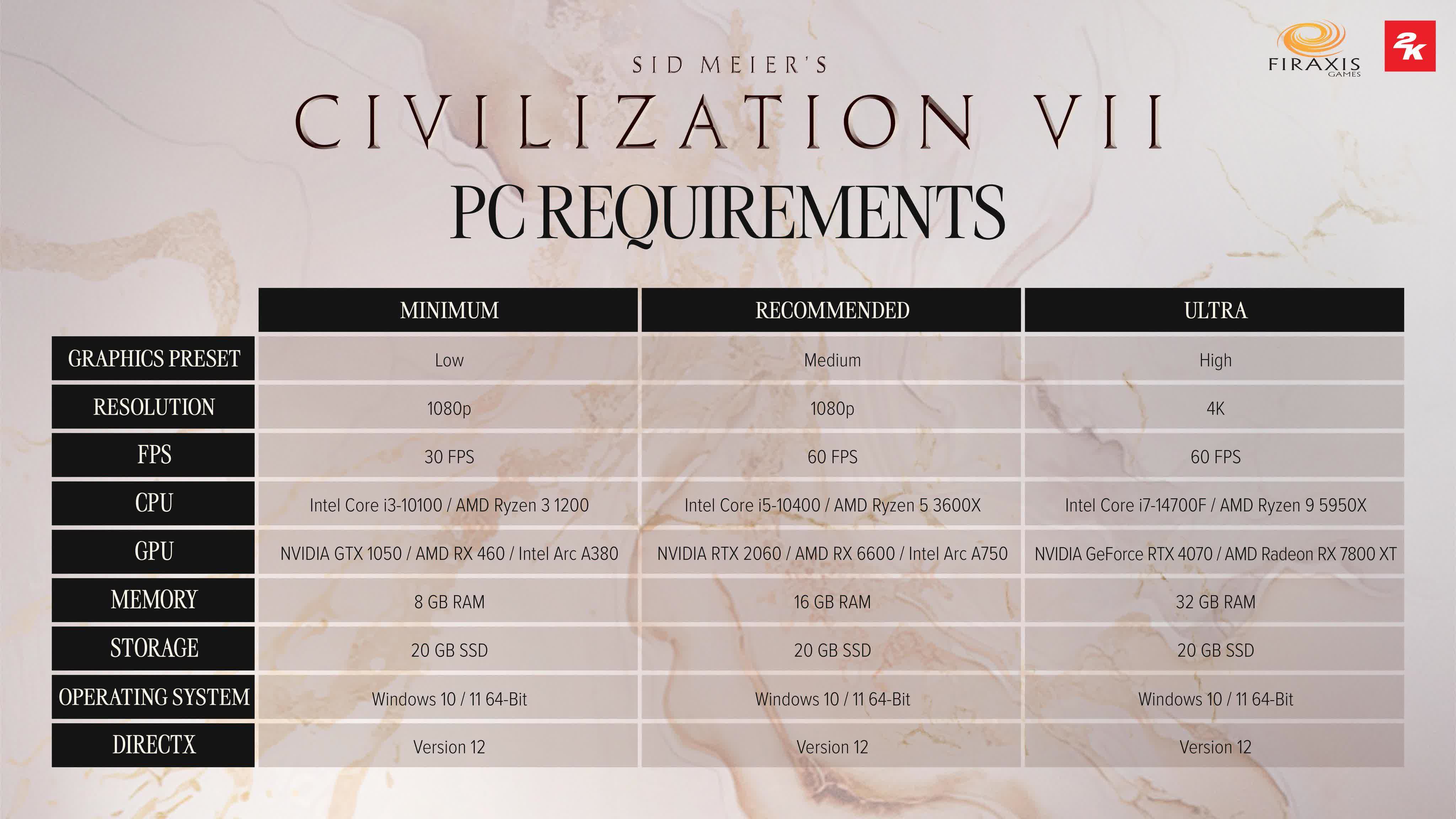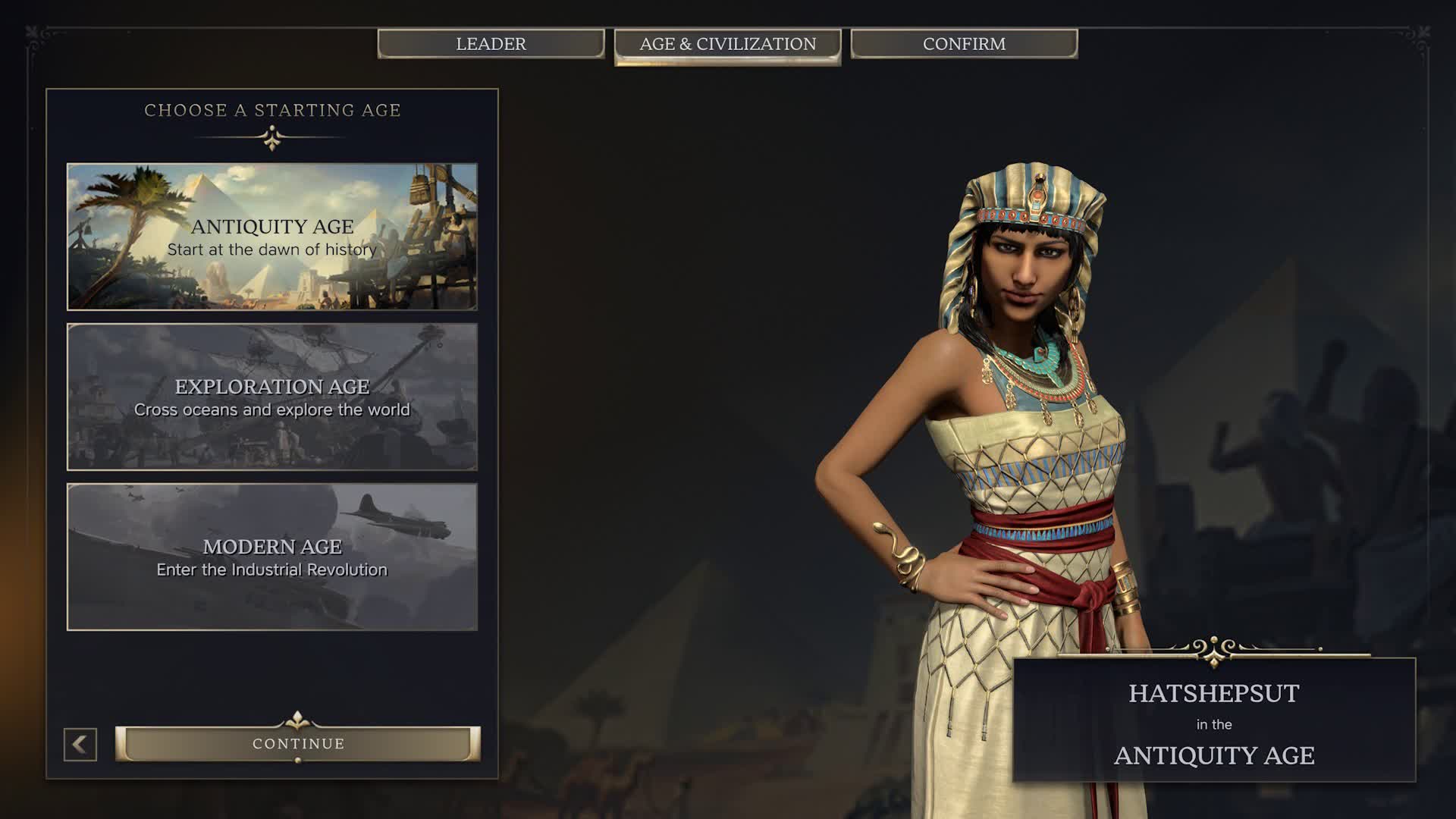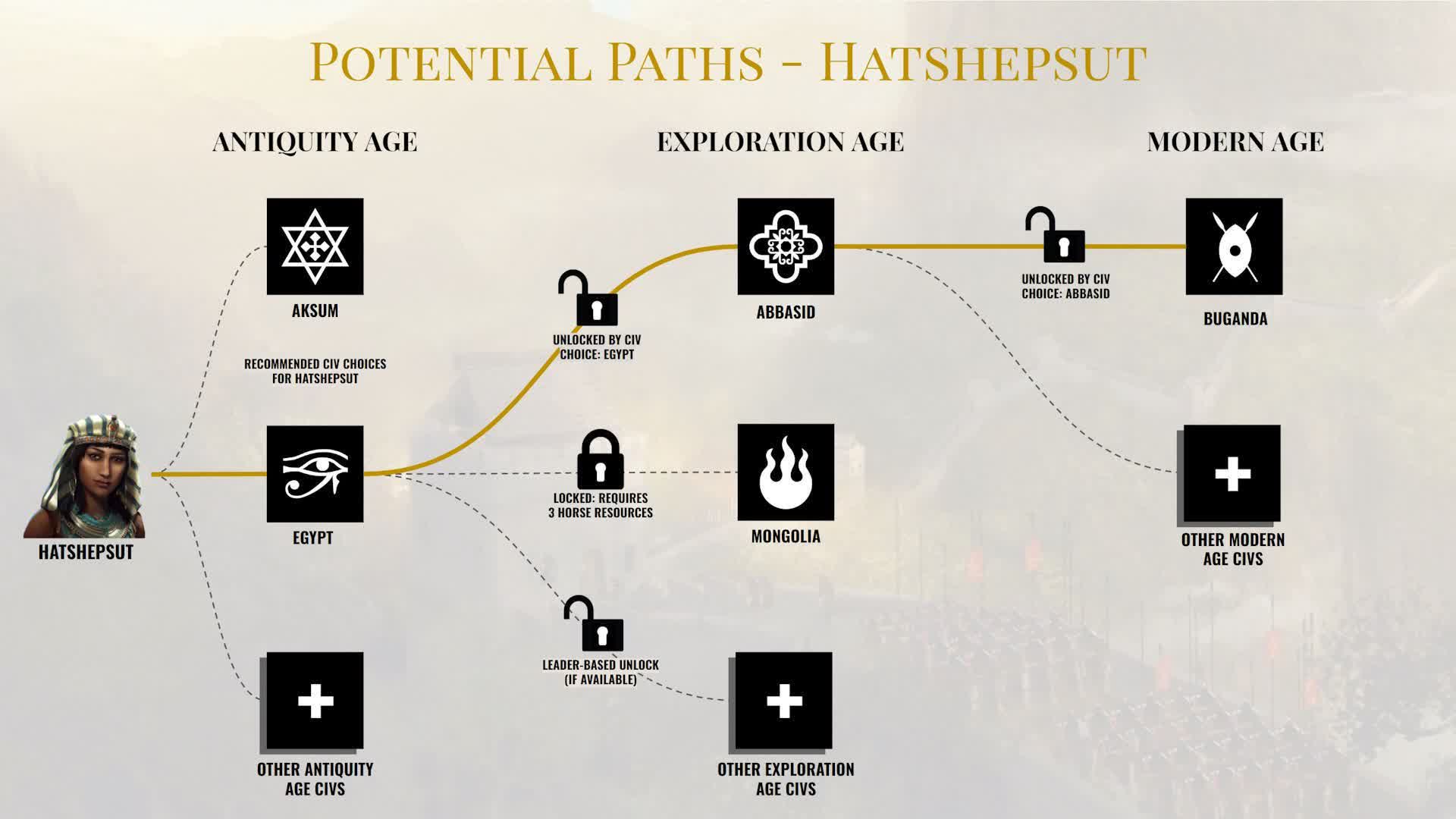Something to look forward to: Sid Meier’s Civilization has never been particularly demanding on graphics cards, but the most recent entry launched eight years ago. Unsurprisingly, next year’s Civilization VII will feature significantly updated specs, along with fundamental changes to how campaigns flow.
The official system requirements for Sid Meier’s Civilization VII have been released. Although the new specs represent a substantial leap from Civilization VI, they remain relatively modest unless you aim to play at 4K resolution and 60 frames per second.
When Civilization VI launched in 2016, it recommended a GeForce GTX 700 or Radeon HD 7970-class GPU. In contrast, the sequel requires at least a GTX 1050, Radeon RX 460, or Intel Arc A380 to maintain 30 fps at 1080p.

Click to enlarge
PC gamers with mid-range cards like the GeForce RTX 2060, Radeon RX 6600, or Intel Arc A750 should be able to achieve 60 fps on medium graphics settings. However, maxing out Civilization VII at 4K will demand an RTX 4070 or RX 7800XT along with 32GB of system RAM.
Additionally, late-game Civilization matches are notorious for stressing CPUs, and 2K recommends upper-tier Intel Raptor Lake (13th and 14th gen Core) or Zen 3 (Ryzen 5000) processors for smooth high-level play.
It’s still unclear whether the game will support upscaling methods like DLSS or FSR. Fortunately, Civilization VII only requires 20GB of storage space.
In a major shift from previous entries, the game splits all campaigns into three eras: Antiquity, Exploration, and Modern. Players can start from any era, with each resembling a miniature campaign.

Firaxis introduced segmented campaigns to speed up matches and make late-game Civilization more accessible, after discovering that over half of Civilization VI players never finished a campaign. The studio estimates that a single era can last between 150 and 200 turns, or roughly three to four hours of gameplay.
Each player begins an era at a similar level of advancement, preventing anyone from gaining an insurmountable lead. Civilizations are exclusive to their appropriate age, and progressing to a new era requires switching to a new civilization while keeping the same leader. Firaxis aims to make each player consistently identifiable while mimicking how civilizations evolved throughout history.
Also see: 30 Years of Civilization – Conquering Gamers’ Free Time
For example, choosing Ashoka as a leader allows players to command the Maurya Empire in Antiquity. Upon entering the Exploration age, one evolutionary path could lead to the Chola Empire, while another might enable the Mughal Empire in the Modern age. Players can also choose drastically different empires for a quick change in strategy.

Click to enlarge
Moreover, beginning a new age expands the size of the map, opens new resources, and introduces new gameplay features. Each age has unique scientific, military, or cultural goals.
Firaxis has only revealed a few available civilizations and leaders so far. Antiquity lets players start as Aksum, Egypt, Greece, Han China, the Khmer, the Maya, Maurya India, Rome, and more. In the exploration age, the Shawnee, Abbasids, Mongolianas, Cholas, Normans, and others become available. The only known modern civilizations thus far are the Mughals, the French Empire, and Buganda.
Sid Meier’s Civilization VII launches on Steam, the Epic Games Store, and consoles on February 11, 2025.


